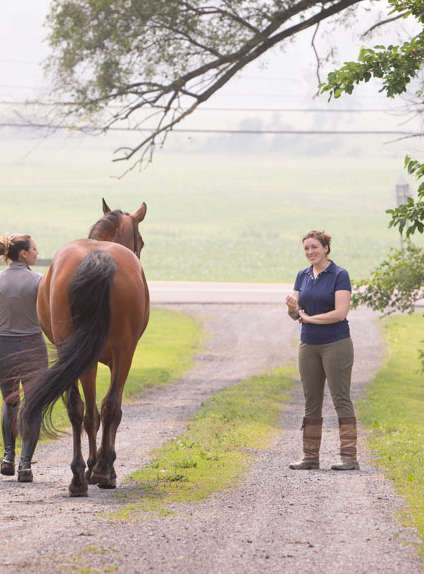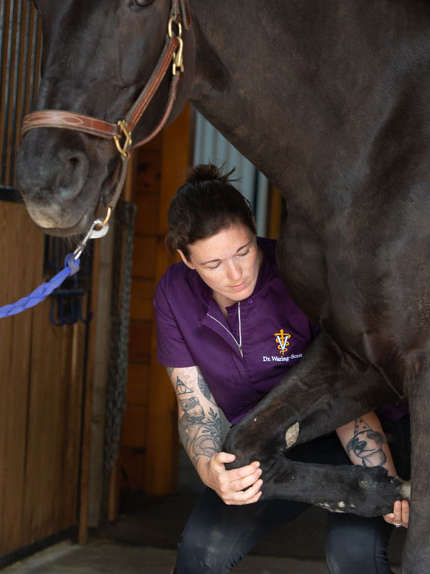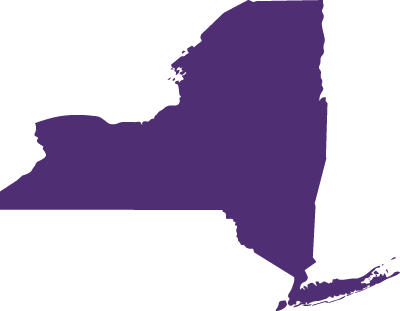Sports Medicine and Lameness Care
Get Your Horse to Optimal Health and PerformanceSports medicine is an essential component of equine veterinary care, especially for performance horses. Whether your horse is a competitive athlete in dressage, jumping, racing, or any other discipline, keeping them in top physical condition is crucial to their success. Sports medicine focuses on the prevention, diagnosis, and treatment of injuries and conditions that impact a horse’s ability to perform.

Our Approach
Through a combination of advanced diagnostics, therapeutic interventions, and injury prevention techniques in equine sports medicine, Dr. Waring-Scott is dedicated to providing compassionate care for your horse, helping them perform at their best while ensuring their long-term health and well-being.


Our Comprehensive Sports Medicine Services
At Excelsior Equine, we offer a range of sports medicine services to meet the specific needs of your horse, including:
Preventative care, to avoid injuries before they occur
Diagnostic imaging, such as X-rays, ultrasounds
Joint Health, including injections and orthobiologics such as Alpha2EQ and ProStride
Rehabilitation programs, for faster recovery after an injury
Lameness assessments, to identify issues that affect performance
Lameness Evaluation and Care
Lameness is a common issue that affects horses of all ages, disciplines, and levels of activity. Whether your horse is experiencing a subtle change in their movement or is showing signs of severe pain, Dr. Waring-Scott is here to help you get to the root cause of the issue and get your horse back to their best.
What’s Included In Our Lameness Evaluation
A thorough lameness exam is the key to accurately diagnosing the cause of a horse’s discomfort and ensuring they receive the proper treatment. Here’s what is involved in a comprehensive lameness evaluation at Excelsior Equine:
1
Detailed History and Observation
The evaluation begins with a detailed history of your horse’s symptoms, recent activities, and any changes in behavior. We’ll ask about your horse’s exercise routine, diet, and any past injuries or conditions. We then observe the horse’s movement at rest, looking for subtle signs of pain, stiffness, or abnormal posture.
2
Physical Examination
A careful physical examination follows, during which Dr. Waring-Scott will palpate the horse’s limbs, joints, and body to identify areas of heat, swelling, or tenderness. Particular care is taken to evaluate for any signs of muscular or postural compensation from lameness that may be present at any other place in the body.
3
Flexion Tests
Flexion tests help identify specific joint issues. By flexing a joint for a period of time and then releasing it, we can observe whether the lameness becomes more pronounced. This helps us pinpoint which joint or region of the limb is causing pain.
4
Movement Assessment
We will assess your horse’s movement both in a straight line and while turning in a circle, as lameness can sometimes be more evident in certain directions. We also evaluate movement at different gaits (walk, trot, canter) to determine how the lameness affects the horse’s overall performance.
5
Hoof Testing
The hooves are often the source of lameness in horses, so a thorough examination is crucial. We use hoof testers to apply gentle pressure to different parts of the hoof to check for any pain or abnormalities, such as abscesses or heel pain.
6
Diagnostic Imaging
If the source of the lameness is not immediately apparent, advanced diagnostic imaging may be needed. This can include on farm X-rays, ultrasounds, or referral for MRI scans to get a clearer picture of the internal structures, such as bones, joints, tendons, and ligaments.
7
Nerve Blocks
In some cases, nerve blocks may be used to pinpoint the exact location of pain. A local anesthetic is injected into specific nerves, temporarily numbing the area. If the lameness improves after the block, we can narrow down the source of the problem.
8
Treatment and Rehabilitation
Once a diagnosis is made, Dr. Waring-Scott will recommend an appropriate treatment plan based on the specific injury or condition. Treatment may include rest, medication, joint injections, or regenerative therapies, as well as a tailored rehabilitation program to help your horse recover and regain strength.
Choose Excelsior Equine for Your Horse’s Sports Medicine and Lameness Care
Experienced Care: Dr. Waring-Scott brings years of experience in equine sports medicine, ensuring that your horse gets the best possible care.
Comprehensive Services: From preventative care to advanced diagnostic testing and rehabilitation, we offer a full spectrum of services to keep your horse healthy and performing at their best.
Personalized Treatment Plans: We understand that every horse is unique, which is why we provide individualized care that is tailored to your horse’s needs and goals.
Compassionate Approach: At Excelsior Equine, we treat your horse as if they were our own, prioritizing their comfort, well-being, and long-term health.

Request an Appointment
Now scheduling appointments in Central and Northern New York.
Large group appointments available throughout all of New York state.
